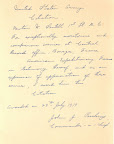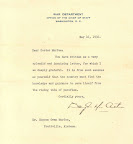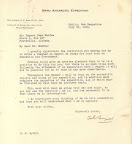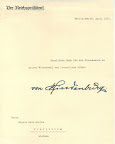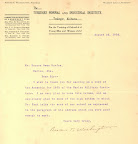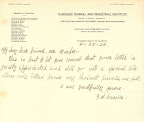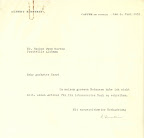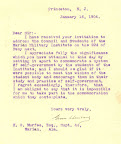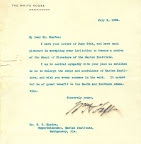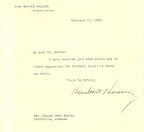An article in the current issue of Alabama Heritage magazine (Fall 2008) picks up the story from here. Entitled “Honorary Degrees for the Alabama Corps of Cadets” by Matthew C. Edmonds, a passage on page 17 reads:
“Over the following three days, the Corps of Cadets marched more than sixty miles to the town of Marion. One cadet recalled later that, on the long march, “many fell by the wayside, and had to be taken into wagons, as their feet gave out….Besides this, we were practically starved out, as we had little to eat on the way.” Unfortunately, provisions in Marion offered only a limited improvement, and officers soon granted a furlough for all cadets, with orders to report back to Marion after thirty days. Cadets went their separate ways, fully expecting life to return to relative normalcy after a month, but for more than a few cadets, that fateful day in Marion was the last time they ever saw each other. Before the corps could reconvene, news of Lee’s surrender at Appomattox arrived in Alabama.”
It’s interesting that COL Murfee of the Alabama Corps of Cadets would later serve as the president of Howard College here in Marion, and that he would found and serve as the first president of Marion Military Institute after Howard moved to Birmingham. James Thomas Murfee is also buried here.
The plaque for COL Murfee in the Alabama Men’s Hall of Fame in the Samford University Library in Birmingham. (Credit: Bill Mathews, MMI H’60, J’62)

On another note entirely, Major Edward M. “Ned” Almond, USA, served as the Professor of Military Science here at MMI in the early 1920s. He also married a Judson College student, Margaret Crook, of Anniston, AL. When Almond was the PMS, he lived in a MMI faculty bungalow on Washington Street. The house still stands, only slightly altered, and is the house immediately to the left (north)of the West Alabama Bank (thanks to Kay Beckett for identifying it!).
Where am I going with this? Well, Major Almond went on to become Lieutenant General Almond, a decorated combat veteran of both World Wars and Korea. He is probably best known as the controversial commander of the X Corps in Korea (my father served in the X Corps). The Almonds ultimately retired to Anniston, AL. They are buried together in Arlington National Cemetery in Washington, D.C.
MAJ Almond as the PMS at MMI in the early 1920s.

A snapshot of Almond at MMI proclaiming him “the best looking man at M.I.”

An early 1920s image of the faculty bungalow on Washington Street where Almond lived.

Another image of the bungalow from the early 1920s. MAJ Almond’s car?

Lieutenant General Almond returned to MMI to dedicate the Alumni Memorial Gymnasium in 1952.

Finally, beside the front steps of Lovelace Hall (“Old South Barracks”) are the remains of one of the original marble steps to the building which was constructed in the 1850s (it resembles a loveseat). There was once a plaque attached to it quoting Henry Wadsworth Longfellow, but the plaque has long since disappeared. It read: “Lives of great men all remind us/ We can make our lives sublime/ And, departing, leave behind us/ Footprints on the sands of time.”
Cadet Tyler Blake of College Station, Texas, sits on Longfellow’s Step (my designation) outside Lovelace Hall.









































